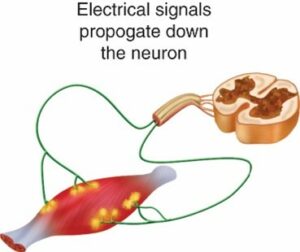What is Muscle Tone?
Michelle L. Lange, OTR/L, ABDA, ATP/SMS
If a client has increased muscle tone, this will impact what seated position is selected and what seating strategies will be used to achieve and maintain this position. Many people with increased muscle tone also display movement disorders and /or primitive reflexes and may be participating in tone management interventions. Alongside traditional seating strategies, Dynamic Seating can be a useful intervention for people with increased muscle tone.
A lack of inhibition from the central nervous system (brain and spinal cord) results in excessive contraction of the muscles or increased muscle tone. This is due to damage in the brain or spinal cord.
We are now beginning a series of Blogs around the subject of Muscle Tone. Included in this series are:
- What is muscle tone?
- What are movement disorders?
- What are primitive reflexes?
- What diagnoses are characterized by increased muscle tone?
- Tone management and medical interventions to decrease muscle tone.
- General seating strategies used with people who have increased muscle tone.
- Dynamic Seating for people with increased muscle tone.
Definitions
There are three main definitions of muscle tone:
- The muscle in a steady partially contracted state caused by the successive flow of nerve impulses.
- The amount of tension or resistance to movement in a muscle.
- Muscle resistance to passive stretch.

Source: Creative Commons
Muscle Tone is controlled by two factors: 1) inhibitory signals from the brain to the spinal cord release GABA (a neurotransmitter) to make muscles relax and 2) excitatory stimulating signals from the muscles to the spinal cord telling themselves to contract. If this balance is normal, then muscle tone is normal.
Etiology
A lack of inhibition from the central nervous system (brain and spinal cord) results in excessive contraction of the muscles or increased muscle tone. This is due to damage in the brain or spinal cord.
Terminology
- Hypotonia: decreased muscle tone.
- Hypertonia: increased muscle tone.
- Rigidity: tone is increased in both the flexors and extensors and is non-velocity dependent.
- Spasticity: muscle spasms are increased by movement.
- Velocity dependent: quickly moving a limb elicits the stretch reflex and increase in muscle tone.
Pathophysiology
During growth, the pull of tight muscles on growing bones can lead to long bone length asymmetries and bone rotation. Specifically, rotation of the femur can lead to hip dislocation. Tonal asymmetries on either side of the spine can lead to spinal asymmetries, particularly in growing children and even more so during growth spurts. Tight muscles tend to pull joints into a flexed position and if the joints do not move into full range often enough or for long enough periods of time, range is lost. This typically requires alternative positioning, such as standers and sleep positioning. Range loss is particularly common during growth. Range loss is also worse and occurs more quickly in the presence of very high tone and rigidity.
We each stabilize our body by balancing muscle groups, something called co-contraction. Just to sit up straight, we balance the flexors and extensors in our trunk. If tone is higher in the flexors, for example, the extensors are less active, impacting stability, balance, and function.
Functionally, increased muscle tone, depending on areas and severity of involvement, can impact ambulation, gross and fine motor control, stability and balance, trunk and head control, feeding and swallowing, and just about any functional activity.
Keep an eye out for further blogs in this series and we welcome your input!
For more information, check out our CEU Course on this topic here!
